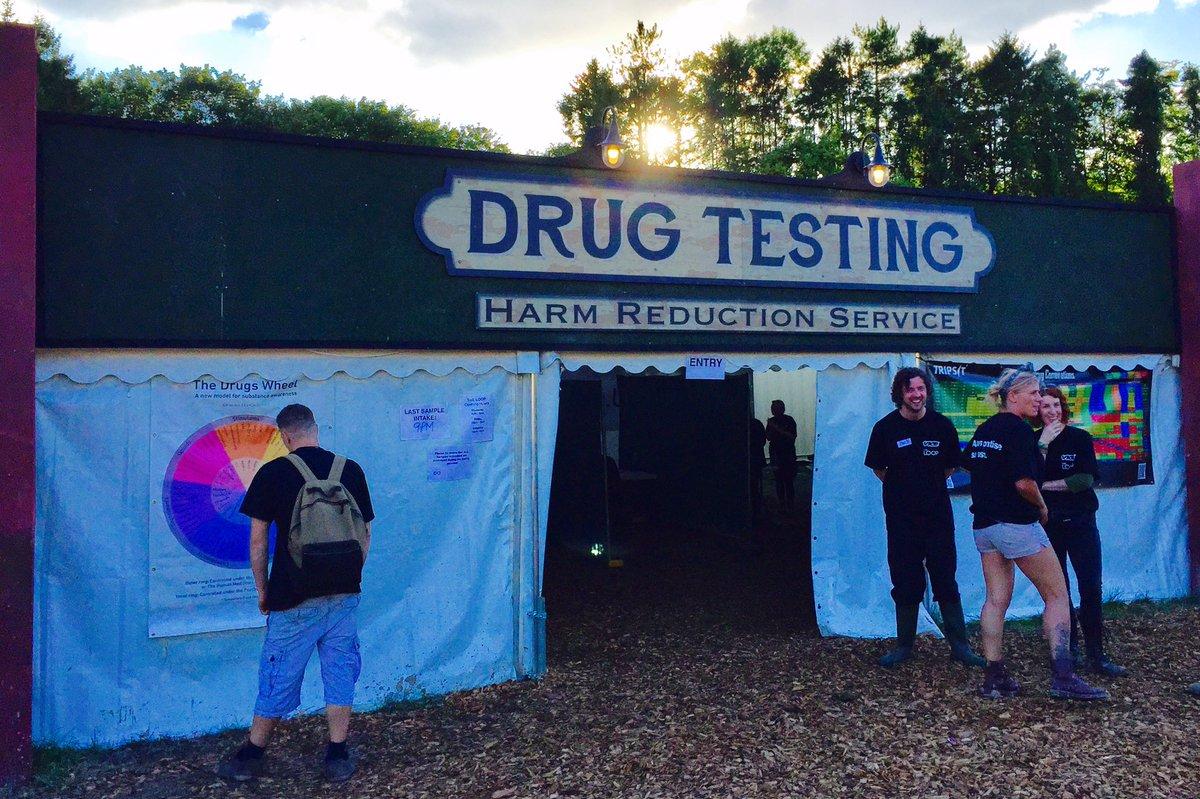Drug Testing Organizations Save Lives, So Why Haven’t Rave and Concert Organizers Embraced Them?
Groups like the Loop and DanceSafe test drugs like Ecstasy and warn users of high dosages and adulterants, but federal legislation from the early 2000s has live music promoters wary of their brand of harm reduction.

On a humid summer night in August 2013, Shelley Goldsmith, a 19-year-old sophomore at the University of Virginia, hopped on a party bus bound to see the Swedish DJs Dada Life in Washington D.C. On the bus, Shelley and her friends took MDMA, otherwise known as Ecstasy.
At around 2 a.m., Shelley’s mom, Deirdre Goldsmith, received a call saying that her daughter was being taken to the hospital; Shelley’s body temperature had risen to lethal levels and she later died at the hospital from heat stroke. In the aftermath, doctors and the press blamed MDMA for Shelley’s sudden death.
But Goldsmith thought other factors surrounding her daughter’s death deserved much more attention, such as the environment in which the drug was taken. “I started doing research and realized there was maybe something more to it than MDMA itself,” Goldsmith told The Appeal. “If it’s used in the wrong environment … hot, overcrowded, limited access to water, inappropriately trained medical staff, the ‘cool down’ space is a frickin’ smoking lounge—it’s awful.”
Since then, Goldsmith has watched as illicit drugs such as cathinones (commonly known as “bath salts”) and a universe of new hallucinogens arrive on the electronic music scene, creating fresh threats to recreational consumers. The increased prevalence of drugs contaminated with illicit fentanyl, which killed nearly 20,000 Americans in 2016, has also sparked urgency among activists like Goldsmith, who has teamed up with public health and harm-reduction workers. Led by organizations like DanceSafe and The Loop, these nonprofits distribute ear plugs, condoms, and drug education literature, as well as conduct onsite drug testing so consumers know what’s really in their pills and powders.
These services are saving lives. In late May, The Loop, a United Kingdom-based drug harm reduction service, alerted thousands of consumers that blue “Punisher” Ecstasy pills had dangerously high amounts of MDMA.
Yet promoters and concert organizers have not embraced harm reduction, even though a recent study led by Canadian researchers from British Columbia and the University of Victoria found that 75 percent of all non-trauma festival deaths from 1999 to 2014 were drug-related. Citing the risk of overdose deaths, a 2015 report by the Canadian Centre on Substance Abuse concluded that festival organizers should make onsite drug testing more widely available.
What’s stopping promoters and venues from creating a safer environment to prevent future deaths? A federal law from 2003 called the Illicit Drug Anti-Proliferation Act (also known as the RAVE Act) which opened up concert venues and promoters to civil penalties and possible jail time for drug-related activities at their events.
Mitchell Gomez, executive director of DanceSafe, a Colorado-based nonprofit that promotes health and safety in the electronic music scene, told The Appeal that as a result of the law, “promoters have become very fearful of providing any harm-reduction services.”
Promoters and organizers say they would be in violation of the RAVE Act if they allowed drug testing organizations to do their work, Adam Auctor, founder of Bunk Police, which distributes drug testing kits at concerts and festivals, told The Appeal. In June, Auctor and his crew were forced out of the Bonnaroo Festival in Manchester, Tennessee. Several security guards disguised as festival goers escorted Auctor and his team off the property for distributing testing kits. Bonnaroo is organized by Live Nation, a California-based events promoter and venue operator, which did not respond to multiple requests for comment about the incident.
The RAVE Act also puts rave and concert goers further at risk of encountering adulterated drugs like fentanyl-laced cocaine, which was prevalent at Electric Forest, a recent festival in Michigan organized by Insomniac, a group whose roots date back to ’90s-era warehouse raves in Los Angeles. “It is absolutely terrifying and it keeps me up at night,” Auctor said.
In 2014, Dede Goldsmith started a campaign to amend the RAVE Act. “Specifically, I am asking for language to be added to the law to make it clear that event organizers and venue owners can implement safety measures to reduce the risk of medical emergencies, including those associated with drug use, without fear of prosecution by federal authorities,” she says. She also began a dialogue about harms caused by the RAVE Act with Virginia senators Tim Kaine and Mark Warner. In 2016, on behalf of Goldsmith, Kaine and Warner asked former Attorney General Loretta Lynch to clarify which harm-reduction safety measures are allowed under the law.
“The DEA shares Mrs. Goldsmith’s concerns that venue owners not be discouraged from providing appropriate safety measures at entertainment venues,” Sean Mitchell, a section chief at the Drug Enforcement Administration, wrote to senators Kaine and Warner in January of this year. “Our review of the Illicit Drug Anti-Proliferation Act, codified at 21 U.S.C §856, did not identify any provision of the Act that would discourage law abiding venue owners from instituting safety measures for its patrons, including the provision of water.”
“I’m trying to make some hay in this administration,” Goldsmith said. “I want water, cool-down spaces, drug education, properly trained medical personnel, I want all those things.”
Stefanie Jones, director of audience development at the Drug Policy Alliance’s Safer Partying Campaign, says that the presence of drugs adulterated with fentanyl has made reforming legislation that hinders drug testing, like the RAVE Act, a necessity.
“There’s no putting the genie back in the bottle,” she said. “At this point, the best harm reduction strategy is to making drug testing legal and as easily accessible as possible.”
